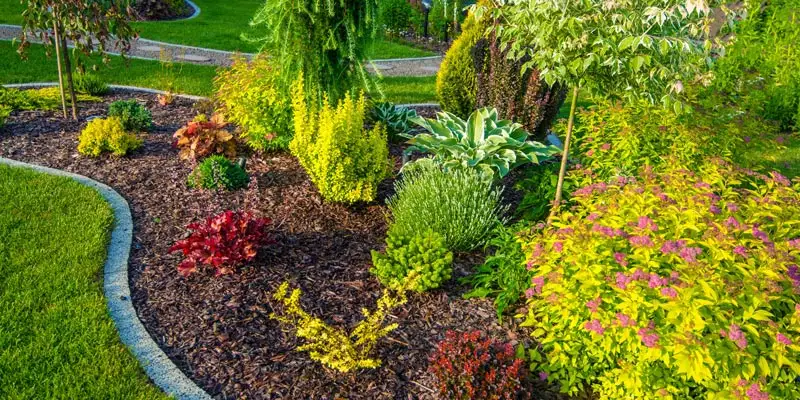The 7-Second Trick For Landscape Design
The 7-Second Trick For Landscape Design
Blog Article
The smart Trick of Landscape Design That Nobody is Talking About
Table of ContentsNot known Facts About Landscape DesignAll about Landscape Design8 Easy Facts About Landscape Design Explained5 Simple Techniques For Landscape Design
When developing a property landscape, the most important action is to put a plan on paper. Establishing a plan of attack will save you time and cash and is most likely to result in an effective style. A plan of attack is developed via the 'layout procedure': a detailed approach that thinks about the ecological problems, your desires, and the aspects and concepts of style.The 5 steps of the design procedure consist of: 1) performing a website supply and evaluation, 2) determining your needs, 3) producing practical layouts, 4) developing conceptual design strategies, and 5) drawing a last design strategy. The initial 3 steps develop the aesthetic, practical, and gardening requirements for the design. The last 2 actions after that apply those needs to the production of the final landscape strategy.
This is an important action for both plant selection and positioning and situating household tasks and functions. It is very important due to the fact that the exact same environment conditions that impact the plantstemperature, moisture, rain, wind, and sunlightalso impact you, the user. The next action is to make a checklist of your requirements and desiresthis aids you identify just how your backyard and landscape will be utilized.
The useful diagram is after that used to situate the activity rooms on the site and from this diagram a theoretical plan is created. The last action is a last layout that consists of all the hardscape and growing details that are required for setup. Throughout the style procedure there are ten important points to consider: for plant selection and task area by considering what you desire and require to aid figure out forms and arrange spaces by assigning activity locations and relating to elements for both the setting and the user by utilizing massing and layering techniques such as change locations and centerpieces in the materials, the shades, and the surface structures for the growth and upkeep of plants by utilizing sustainable layout methods A detailed stock and evaluation of the site is important to figure out the environmental conditions for plant growth and the very best use the site.
What Does Landscape Design Mean?
The type of dirt figures out the nutrients and dampness available to the plants. It is always best to make use of plants that will certainly prosper in the existing soil. Although dirt can be modified, modification is usually pricey and most times inefficient. Existing plants can supply ideas to the soil kind. Where plants expand well, keep in mind the soil problems and utilize plants with comparable growing requirements.

Sun/shade patterns, the quantity and length of direct exposure to sun or color (Number 1), produce microclimates (occasionally called microhabitats) - Landscape Design. Recording website conditions and existing plant life on a base map will certainly disclose the location of microclimates in the lawn. Plants typically fall under one or 2 of 4 check my reference microclimate categories-full sunlight, partial shade, shade, and deep color
Getting My Landscape Design To Work
Number 1. Sun and color patterns. Credit Rating: Gail Hansen, UF/IFAS It is essential to keep in mind all the present conditions on a precise base map when doing the site supply (Number 2). Utilities such as high-voltage line, septic systems, underground utilities and roofing overhangs identify plant place. Use a land surveyor's plat of your home for the limits and location of your home.


Spending plan problems include the materials, first installation expenses and the on-going maintenance prices. Determine the moment and cash you are eager to put into keeping the plants and hardscape-be practical regarding your intents and capability. Figure 3. Present use locations. Credit: Gail Hansen, UF/IFAS Number 4. Proposed use areas. Credit: Gail Hansen, UF/IFAS There are several landscape design motifs- from easy to complicated, yet it is handy to select one to direct your plant and product selection.
Many people locate it helpful to look in horticulture magazines and publications for concepts. This is a great start, but explanation realize that the yards in the pictures were chosen due to the fact that they are exceptional examples. Look at the images with a crucial eye to collect ideas that you can adapt to your interest level, your spending plan and your website.
Decide if you want to open your yard, close your yard, or a little of both, to these views (Landscape Design). Simply put, do you desire the garden to confine the space around you and relate mainly to the house, or do you want the garden to open views and look outward, connecting to the environments? This will provide you a starting indicate think of a style
A Biased View of Landscape Design
This is called "local color", which implies it fits with the surroundings. There are both type motifs and style themes. Every yard must have a form style, but not all gardens have a design theme. Actually, numerous domestic gardens have no specific design other than to blend with your home by duplicating information from the style such as materials, color, and kind.
In a kind theme the organization and form of the areas in the lawn is based either on the form of your home, the shape of the areas between the residence and the property borders, or a favored form of the property owner. The form style establishes the shape and organization (the layout) of the areas and the web links in between them.

Report this page